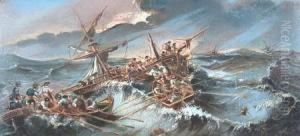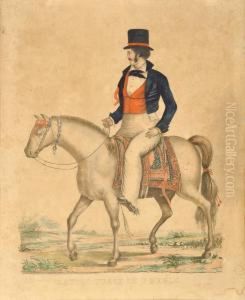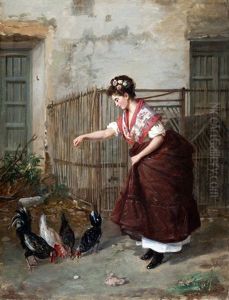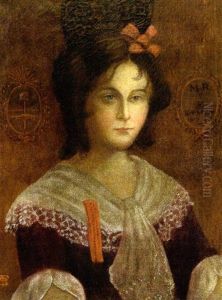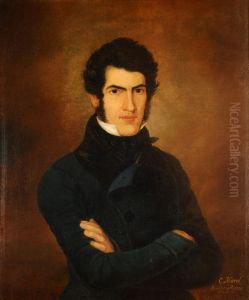Carlos Morel Paintings
Carlos Morel is considered one of the earliest and most significant Argentine painters, often referred to as the 'father of Argentine painting.' Born on February 2, 1813, in Buenos Aires, Argentina, Morel was part of a period in which the newly independent nations of Latin America were beginning to develop their own cultural identities, separate from the Spanish colonial influence.
Morel demonstrated an aptitude for the arts from a young age and was one of the first students to enroll in the Academia de Dibujo (Academy of Drawing), which was established in Buenos Aires in 1823. This institution was crucial for Morel's development as an artist; it was here that he received formal training and honed his skills. His early works were primarily in the medium of lithography, and he is known to have produced a series of lithographs depicting scenes of everyday life in Buenos Aires, providing valuable insights into the society and culture of his time.
Throughout his career, Morel remained deeply connected to his homeland, and his works often reflected the landscape and people of Argentina. He was not only a portraitist but also painted historical scenes and landscapes. Some of his paintings, such as 'La Vuelta del Malón' (The Return of the Indian Raid), have become iconic in Argentine visual culture, capturing the dramatic encounters between indigenous peoples and European settlers.
Despite his influence, Morel's life was not without challenges. He struggled with financial difficulties and did not always receive the recognition he deserved during his lifetime. Nevertheless, he continued to work and contribute to the Argentine art scene. Carlos Morel died on March 5, 1894, in his hometown of Buenos Aires. After his death, his reputation grew, and he came to be celebrated as a pioneer of Argentine national art. Today, his works are considered a testament to the artistic and cultural heritage of Argentina and are studied for their historical significance and artistic merit.
